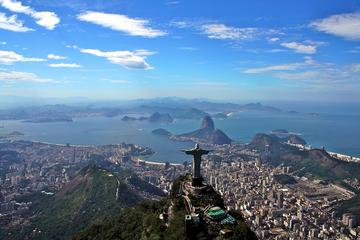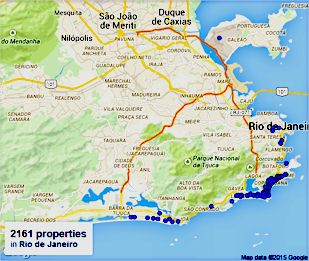» BRAZIL • Discover Brazil • Southeast Brazil • Rio de Janeiro
Discover Magical Rio de Janeiro
Rio de Janeiro is famous for its natural settings, its Carnival celebrations, samba and other music, and hotel-lined tourist beaches, such as Copacabana and Ipanema, paved with decorated black and cream swirl pattern mosaics known locally as 'pedra portuguesa'.
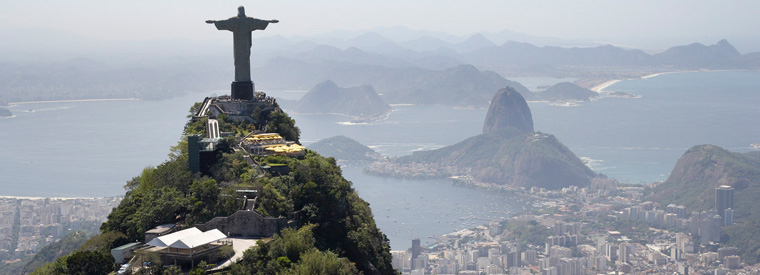
A | B | C | D | E | F | G | H | I | J | K | L | M | N | O | P | Q | R | S | T | U | V | W | X | Y | Z
» Flamengo
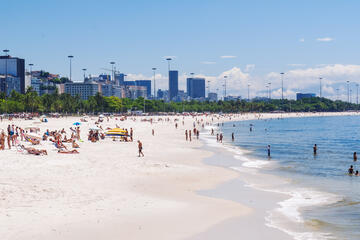
The Flamengo district of Rio de Janeiro offers a comfortable, middle class, downtown alternative to trendy beaches and resorts. Far less crowded than Rio hot spots like Copacabana or Ipanema, Flamengo is still located close enough to be a short cab ride away. The neighborhood's main highlight is Flamengo Park, a grassy section of reclaimed shoreline that faces Guanabara Bay. The water here isn't safe for swimming, but the walking trails throughout the park are packed with joggers, walkers, and locals in the morning and late afternoon …
» Flamengo Park
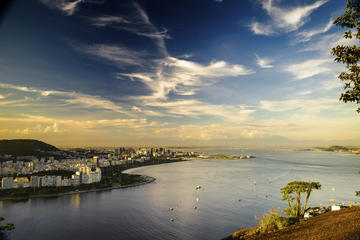
While the official name of Flamengo Park is Parque Brigadeiro Eduardo Gomes, Rio residents know it only as Aterro'a name that translates as 'landfill.' Lest you think this beautiful park is built on a festering trash heap, the name is derived from land that was used to fill a portion of the bay. Today, that fill is home to the largest park in Rio de Janeiro, encompassing nearly 300 acres of outdoor urban green space. This is where Rio comes to play as well as work up a sweat. Morning joggers and walkers line the park's promenade at sunrise …
» Gloria Marina
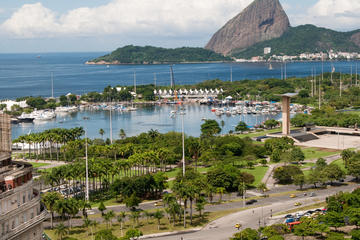
Gloria Marina, with its coastal views and epic mountain scenery, is one of Rio de Janeiro's most popular waterfront destinations. Nestled between the Sugar Loaf and Corcovado Mountains, the marina offer visitors a picturesque place to take in live music performances, public and private boat parties and ship tours of the city. Visitors say the cuisine at nearby Barracuda Restaurant is some of the best in town (and so are the views!) but travelers agree it's the reasonably priced diving certification classes and personalized sailing lessons …
» Grumari Beach
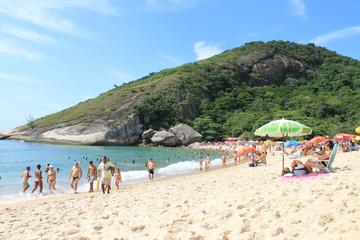
While the beaches of Copacabana and Ipanema offer a lot to see and there is always something going on, sometimes visitors find themselves in need of a break from the vibrant city of Rio de Janeiro. Grumari Beach is one of those beaches that is still a real insider tip and since it can only be reached by car, it is not very well known by tourists. Here, you can enjoy peace and tranquility surrounded by rolling hills and deep green Atlantic rainforest. The powdery sand along the 3 kilometer long beach is a bit darker …
» Guanabara Bay
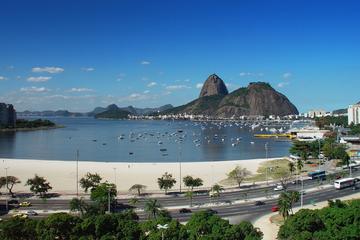
A vast oceanic inlet flanked by the looming peaks of Sugarloaf Mountain and Papagaio Peak and dotted with over 100 islands, Guanabara Bay provides a dramatic backdrop to the city of Rio de Janeiro. Measuring in at about 159 square miles (412 square kilometers), Guanabara is Brazil's second largest bay, home to the cities of Niterói and São Gonçalo, the Port of Rio de Janeiro and Rio's two airports. The iconic landscape has been immortalized on countless postcards. Most visitors choose to explore the sights of Guanabara Bay with a boat cruise from Rio harbor …
» Imperial Museum
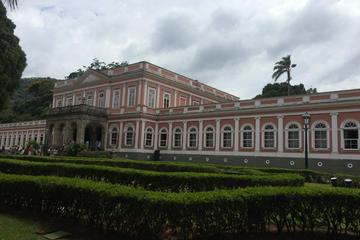
Located smack in the center of Petrópolis'the regal mountain town about an hour north of central Rio de Janeiro'the Imperial Museum offers fascinating insight to the lives of Brazilian royalty. Constructed in the middle of the 19th century as a summer home for Pedro I, the Imperial Museum still has the feel of a royal Brazilian palace. Walk past large, tapestry-adorned walls and through hallways of antique furniture, and let your jaw drop at the collection of crown jewels'where over 600 diamonds and 77 pearls adorn the imperial crown …
» Ipanema Beach
Charming and chic, Ipanema Beach (Praia de Ipanema) is the richer and ritzier sister of the also infamous Copacabana beach. Ipanema backs onto a fancy neighbourhood and there are plenty of high-end hotels. The stunning beach gets divided up depending on the interests of the beachgoers. There is the family section, the gay section, the ageing-intellectual section and so on; you'll soon find where you feel comfortable. At night the beach is lit up and families come to the beach with their barbeques …
» Lapa Neighborhood
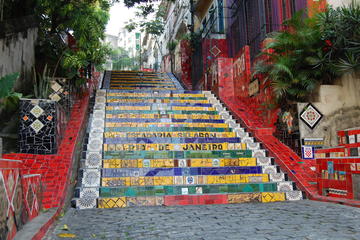
The most bohemian of Rio de Janeiro's neighborhoods, vibrant Lapa is best known for its eclectic music scene, with an abundance of bars, clubs and venues hosting local samba and forró bands. After dark, the main streets of Rua da Lapa or Rua Joaquim Silva come alive, with dancers spilling onto the streets and top clubs like the Rio Scenarium, Arco Iris and Asa Branca teeming with locals and in-the-know tourists. Even in the daylight hours, Lapa is a colorful district to explore, with the striking colonial buildings …
» Leblon Beach
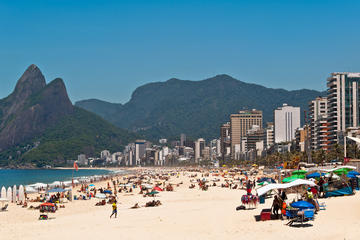
Fronting one of Rio's wealthiest and most exclusive neighborhoods, Leblon Beach is a slightly quieter alternative to its neighbor Ipanema. Separated from Ipanema by a canal, the beach is popular with families with young children, as it offers a play area equipped with beach toys and playground equipment, collectively called Baixo Baby. While calmer and less crowded than Copacabana and even Ipanema, the sandy stretch still offers beautiful views of the mountains, a string of beach bars serving caiparinhas …
» Leme Beach (Praia do Lemo)
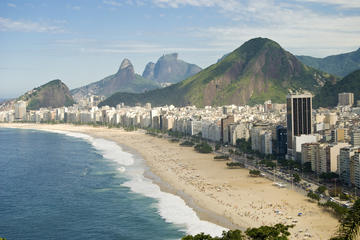
Leme Beach is a natural extension of famous Copacabana, although unlike its popular, high profile neighbor, Leme Beach is a calm stretch of sand where fishermen, locals, and neighborhood residents enjoy the calming sound of the sea without the choking crowds. While technically located along the same stretch of sand as Copacabana Beach, Leme Beach is the final half mile of the northern stretch of the beach. Here, visitors will also find Leme Fort'an historic outpost used by the military that still houses collections of guns …
» Maracana Stadium
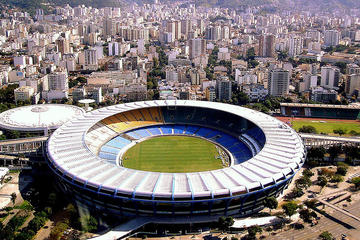
The gigantic Maracanã Stadium was built to open the 1950 World Cup. It holds the record for the largest attendance at a World cup final as 199,854 paying spectators crammed into the stadium and many more besides. If you're after the intense Brazilian football experience complete with the drums, flares, and chanting, then get to a game; otherwise the sports museum inside the stadium with photographs, cups, and Pele's famous no. 10 jersey is a more sedate experience (enter at Gate 18) …
» Marapendi Natural Park
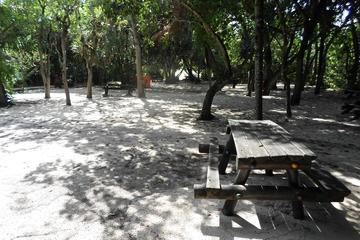
Nature-lovers will find an incredible escape amid the nearly 250 hectares of land that make up Marapendi Natural Park. This vast landscape of mangroves and sandbanks is home to some of the nation's rarest species, including the Liolaemus lizard, caimans, a variety of butterflies and even the hard-to-spot jacupemba bird. Travelers can explore the network of unpaved roads that wind through Marapendi. The Environmental Education Reference Center, which is located in the park, is worth a visit for those looking to learn more …
» Mirante Dona Marta
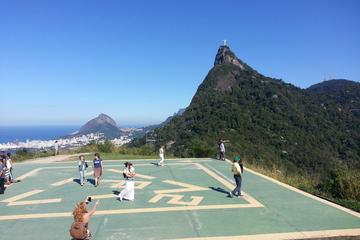
The Mirante Dona Marta literally translates to 'lookout,' and visitors to the site will get just that ' an incredible view of some of Rio de Janeiro's best sights, often without the crowds. Standing there one can see the long stretches of lush forest and white sand beach below, and even take in the famous sights of the Christ the Redeemer statue and Sugarloaf Mountain. The area functions as a helipad and observation point, with panoramic views of Guanabara Bay and Copacabana …
» Morro da Urca
.jpg)
Sitting in the shadow of big brother and Rio de Janeiro icon, Sugar Loaf Mountain, the Morro da Urca is just as important if only because the cable car trip up to Sugar Loaf includes a stop atop this turtle shell-shaped rock. Not to be outdone by its better-known neighbor, the 720-foot hill, a little more than half Sugar Loaf's height of 1,300 feet, still offers spectacular panoramic views of Christ the Redeemer and Corcovado, Copacabana and Ipanema beaches, Guanabara Bay, downtown Rio …
» Morro Dois Irmaos
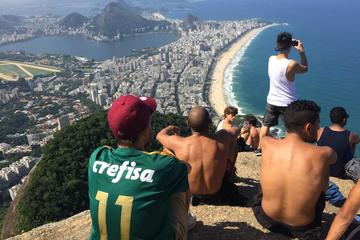
Named for its double peaks, Rio de Janeiro's Morro Dois Irmaos translates to the 'Hill of Two Brothers.' The city is famous for its views, especially from above, and from the top of the two peaks it is possible to see Ipanema and Copacabana beaches, Arpoador, São Conrado and the Tijuca Forest. Sweeping vistas provide a near 360-degree view of the scenic surroundings. With the Vidigal favela located just below, it is also a fascinating place to view the expansive communities of the city from above …
» Museum of Modern Art
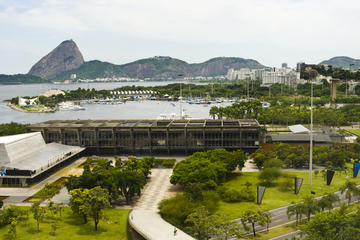
In 1978, some 20 years after Rio's Museum of Modern Art first opened its doors, a fire ripped through the galleries and destroyed hundreds of priceless works by Picasso, Miro and Salvador Dali. Since then, the museum has rebuilt its home'and its collection'to become the premier destination for modern art lovers traveling to South America. Visitors to the Museum of Modern Art are met by a towering stone pillar façade that's tucked between colorful, well-kept, modernist gardens …
» BRAZIL • Discover Brazil • Southeast Brazil • Rio de Janeiro



